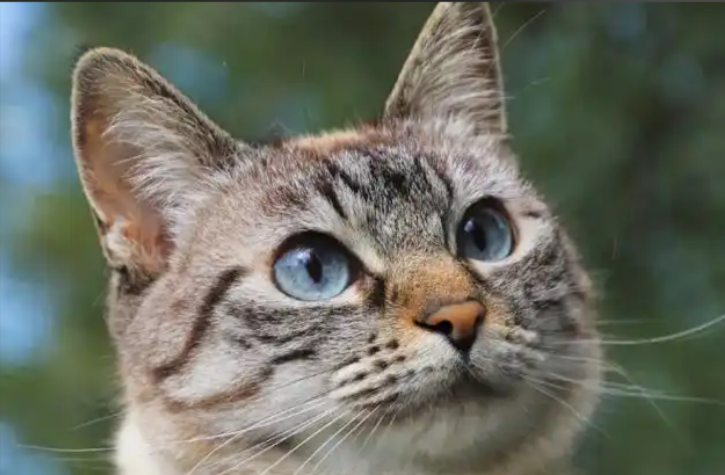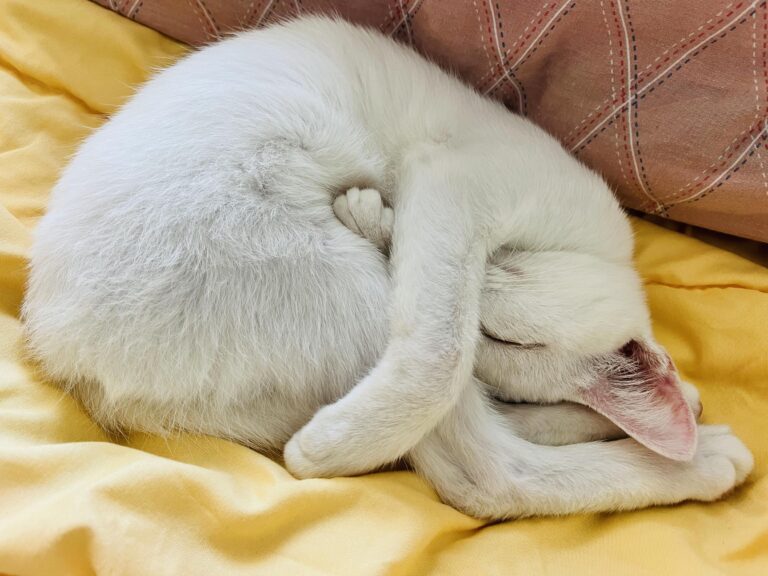What Fruits Can Cats Eat? What can we give him to eat?
Curiosity > Smell > Taste
It mainly starts with curiosity

As carnivores, cats can hardly taste sweetness.
What we can taste depends on whether we have relevant functional genes and whether these genes can correctly encode functional proteins. For example, the perception of sweetness depends on the specific sweet taste receptor genes Tas1r2 and Tas1r3.
Studies have found that there is a 247-base deletion in the Tas1r2 gene locus of cats, which cannot be transcribed and synthesized normally to sense sweetness, and the function of tasting sweetness is lost.
Not only cats, but also big cats such as lions, tigers, and cheetahs have the same genetic defect and cannot taste the sweetness of sucrose, saccharin, and artificial sweeteners (related to not eating grains and fruits to consume carbohydrates).
The first attempt may be out of curiosity
Many times, cats are interested in fruits just out of “curiosity”. Imagine this scene:
The cat sees you take out a new thing from the refrigerator where you usually take out canned food and food. [It must be eaten]
After washing, it is placed on the table or other high places where it cannot reach; it hears the smacking sound when you eat, and comes to you but is ruthlessly separated by you. [You eat alone]

Next, cats will become extremely curious about the fruit! What is this strange thing that they are not allowed to eat, but only allowed to eat, and that emits a special smell?
Driven by curiosity, many cats will try every means to taste it. But most of the time, they just lick it twice and leave, and will not really “eat” it.

Love to eat, may be attracted by the special smell
Some fruits are really “magic”, for example, some cats are addicted to Hami melon. This is because the special fruity aroma of mature Hami melon is rich in volatile compounds such as amino acids, fatty acids, carotenoids and terpenoids, among which a large number of amino acids and fatty acids have a smell similar to meat.
And cats mainly rely on smell to identify individuals and distinguish food. Therefore, behavioral scientists speculate that cats recognize Hami melon as “a kind of meat with a unique taste”; or because of the similarity of its smell, Hami melon is included in the scope of “safe to eat”.

Unfortunately, we don’t know whether other fruits have the same smell characteristics as cantaloupe. It is still unknown why cats like to eat fruits such as watermelon and strawberry.

Which fruits can’t cats eat? Which ones can they eat?
Fruits that can’t be eaten:
● Longan, lychee, peach, apricot: “irritants” in the cat world, easy to cause allergies (high histamine content), don’t eat them when they are sick;
● Grapes/grape products: poisoning causes acute kidney injury (failure) in cats;
● Unripe tomatoes and eggplants: solanine and α-tomatine poisoning;
● Citrus fruits: cause gastrointestinal discomfort, diarrhea, and vomiting in cats.

Fruits that can be tasted in small amounts, but not eaten in large amounts:
Watermelon, apple, mango, pear, strawberry, blueberry, papaya, banana, pineapple, pitaya, cantaloupe, cherry, durian, etc.
These fruits should be deseeded and pitted (toxic to cats) and cut into small pieces (to avoid choking), so that cats can taste a little bit, which can help constipated cats defecate (pumpkin is better), or allow cats who don’t like to drink water to take in water in disguise.
However, because the sucrose contained in fruits is difficult for cats to digest, eating too much will cause gastrointestinal burden and easily cause diarrhea, obesity, and diabetes!

So be sure to taste only a little!






